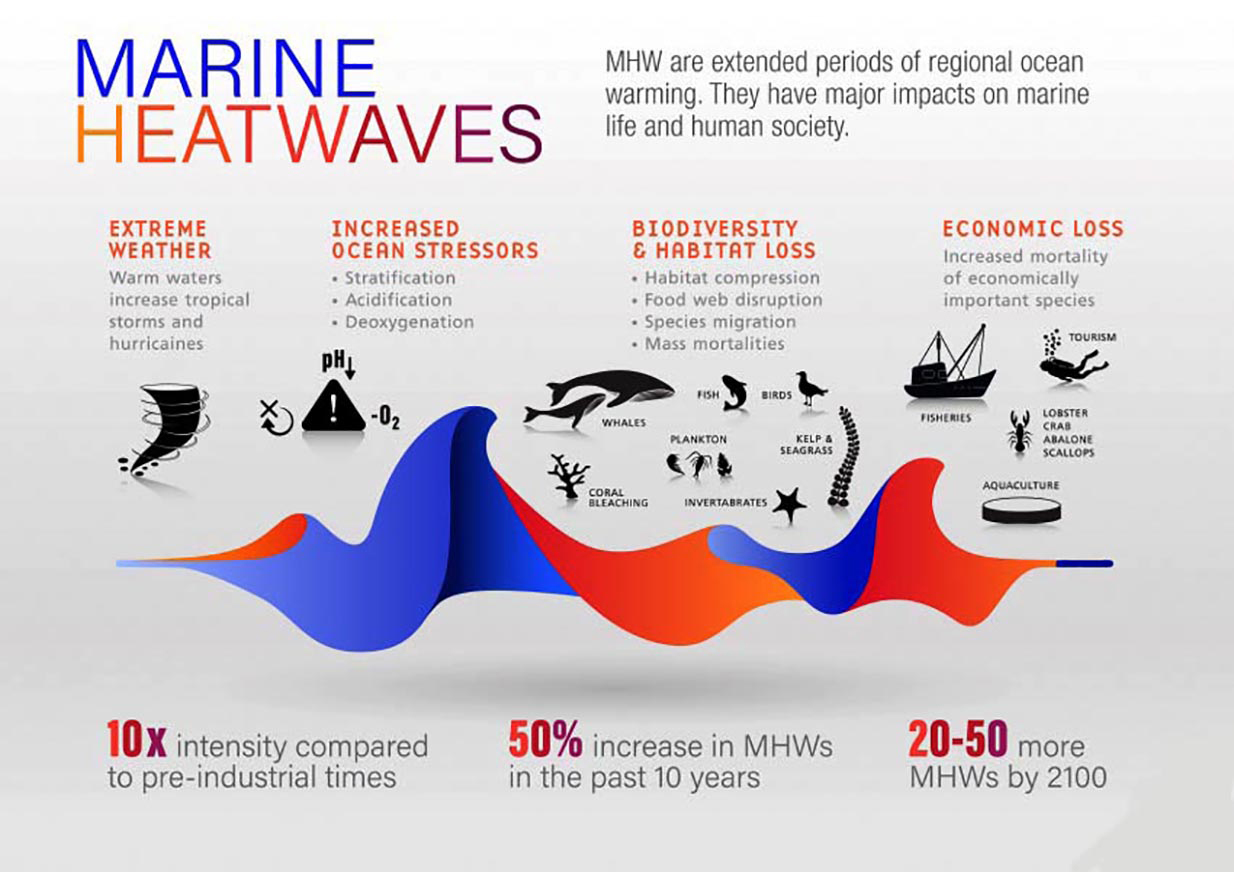Marine Heatwaves | 09 Feb 2022
For Prelims: Marine Heatwaves, Gulf of Mannar, ocean currents, El Niño, Great Barrier Reef, ocean acidification.
For Mains: Marine Heatwaves, its impacts and reasons for the its causes.
Why in News?
According to a study, marine heatwaves — or the ones that form on oceans — have been on the rise in the waters around India.
- Emerging studies have reported their occurrence and impacts in the global oceans, but are little understood in the tropical Indian Ocean.
- Also, according to the Intergovernmental Panel on Climate Change (IPCC) Sixth Assessment Report (AR6), the sea surface temperature over the Indian ocean is likely to increase by 1 to 2 °C when there is 1.5°C to 2°C global warming.
What are the Findings of the Study?
- The Western Indian Ocean region experienced the largest increase in marine heatwaves at a rate of about 1.5 events per decade, followed by the north Bay of Bengal at a rate of 0.5 events per decade.
- The marine heatwaves in the Western Indian Ocean and the Bay of Bengal increased drying conditions over the central Indian subcontinent.
- Correspondingly, there is a significant increase in the rainfall over south peninsular India in response to the heatwaves in the north Bay of Bengal.
- From 1982 to 2018, the Western Indian Ocean had a total of 66 events, while the Bay of Bengal had 94 events.
- These changes are in response to the modulation of the monsoon winds by the heatwaves.
- This is the first time that a study has demonstrated a close link between marine heatwaves and atmospheric circulation and rainfall.
What are Marine Heatwaves?
- Marine heatwaves are periods of extremely high temperatures in the ocean.
- These events are linked to coral bleaching, seagrass destruction, and loss of kelp forests, affecting the fisheries sector adversely.
- Study showed that 85% of the corals in the Gulf of Mannar near the Tamil Nadu coast got bleached after the marine heatwave in May 2020.
- The most common drivers of marine heatwaves include ocean currents which can build up areas of warm water and air-sea heat flux, or warming through the ocean surface from the atmosphere.
- Winds can enhance or suppress the warming in a marine heatwave, and climate modes like El Niño can change the likelihood of events occurring in certain regions.
What are the Impacts of Marine Heatwaves?
- Affect Ecosystem Structure:
- Marine heat waves affect ecosystem structure, by supporting certain species and suppressing others.
- It has been associated with the mass mortality of marine invertebrates, and may force species to change behaviour in a way that puts wildlife at increased risk of harm.
- Change Habitat Ranges of Certain Species:
- Marine heatwaves can change the habitat ranges of certain species, such as the spiny sea urchin off southeastern Australia which has been expanding southward into Tasmania at the expense of kelp forests which it feeds upon.
- Economic Losses:
- Marine heatwaves can cause economic losses through impacts on fisheries and aquaculture.
- Affect Biodiversity:
- Biodiversity can be drastically affected by marine heatwaves.
- In 2016, marine heatwaves across northern Australia led to severe bleaching of the Great Barrier Reef.
- Biodiversity can be drastically affected by marine heatwaves.
- Increase the Risk of Deoxygenation and Acidification:
- Often they occur alongside other stressors such as ocean acidification, deoxygenation, and overfishing.
- In such cases, MHWs not only further damage habitats, but also increase the risk of deoxygenation and acidification.
Way Forward
- Since the frequency, intensity, and area covered by the marine heatwaves are increasing, it is needed to enhance the ocean observational arrays to monitor these events accurately, and update our weather models to skillfully predict the challenges presented by a warming world.
- Effective responses to MHWs require action from a broad range of stakeholders: policymakers, researchers, the private sector (fisheries, aquaculture, ecotourism), conservationists, and civil society.
- Local management agencies should therefore raise awareness across all stakeholders and implement forecast systems to help achieve a coordinated response.
- National and sub-national governments should design and implement measures to protect communities and build regional ocean resilience.

